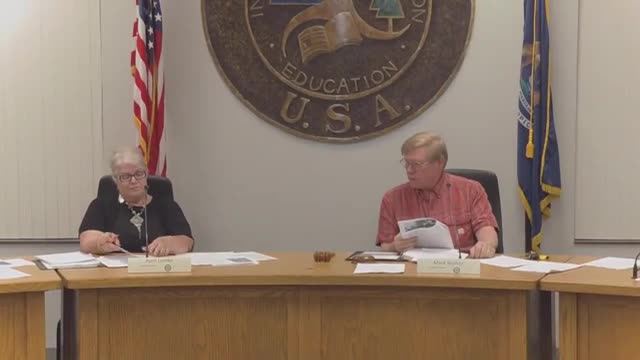City Officials Discuss Land Use Variances and Neighborhood Compliance Issues
September 26, 2025 | Big Rapids, Mecosta County, Michigan
This article was created by AI summarizing key points discussed. AI makes mistakes, so for full details and context, please refer to the video of the full meeting. Please report any errors so we can fix them. Report an error »

The Zoning Board of Appeals meeting held on September 25, 2025, in Big Rapids, Mecosta County, focused on discussions surrounding land use, property variances, and community standards. The meeting aimed to address how proposed land uses would impact public services and the surrounding environment.
The first significant topic addressed was the necessity for public services and facilities to accommodate increased loads from proposed land uses. Board members emphasized the importance of ensuring that developments provide adequate services, such as parking, while also maintaining aesthetic standards and protecting the natural environment. The discussion highlighted the need for developments to be socially and economically viable, promoting harmonious relationships with neighboring properties.
A key point of contention arose regarding a specific property that had been previously occupied by a large farmhouse. The board discussed the implications of the property's size on potential uses, noting that the current zoning classification (R-2) permits single-family homes or duplexes. However, the property in question was deemed too small to meet the requirements for either option without a variance. The board noted that a single-family home could be constructed on the property, but a duplex would not be feasible due to size constraints.
Members also discussed the historical context of the property, referencing the previous structure's size and layout, which included an attached garage and shed. The conversation revealed that many homes in the neighborhood are situated on small lots, leading to a pattern of nonconforming uses that the board must consider when evaluating new proposals.
In conclusion, the meeting underscored the board's commitment to balancing development needs with community standards and environmental considerations. The discussions will inform future decisions regarding property use and zoning variances, ensuring that developments align with the city's goals for sustainable growth and neighborhood compatibility.
The first significant topic addressed was the necessity for public services and facilities to accommodate increased loads from proposed land uses. Board members emphasized the importance of ensuring that developments provide adequate services, such as parking, while also maintaining aesthetic standards and protecting the natural environment. The discussion highlighted the need for developments to be socially and economically viable, promoting harmonious relationships with neighboring properties.
A key point of contention arose regarding a specific property that had been previously occupied by a large farmhouse. The board discussed the implications of the property's size on potential uses, noting that the current zoning classification (R-2) permits single-family homes or duplexes. However, the property in question was deemed too small to meet the requirements for either option without a variance. The board noted that a single-family home could be constructed on the property, but a duplex would not be feasible due to size constraints.
Members also discussed the historical context of the property, referencing the previous structure's size and layout, which included an attached garage and shed. The conversation revealed that many homes in the neighborhood are situated on small lots, leading to a pattern of nonconforming uses that the board must consider when evaluating new proposals.
In conclusion, the meeting underscored the board's commitment to balancing development needs with community standards and environmental considerations. The discussions will inform future decisions regarding property use and zoning variances, ensuring that developments align with the city's goals for sustainable growth and neighborhood compatibility.
View full meeting
This article is based on a recent meeting—watch the full video and explore the complete transcript for deeper insights into the discussion.
View full meeting
